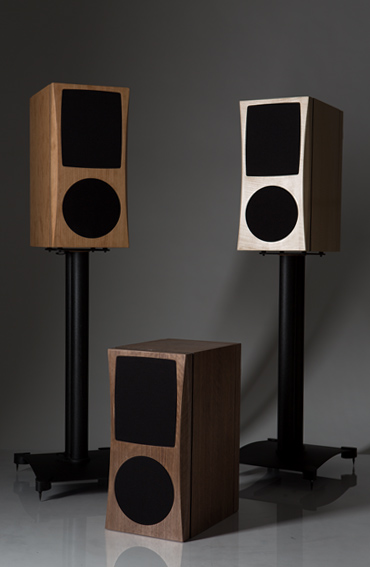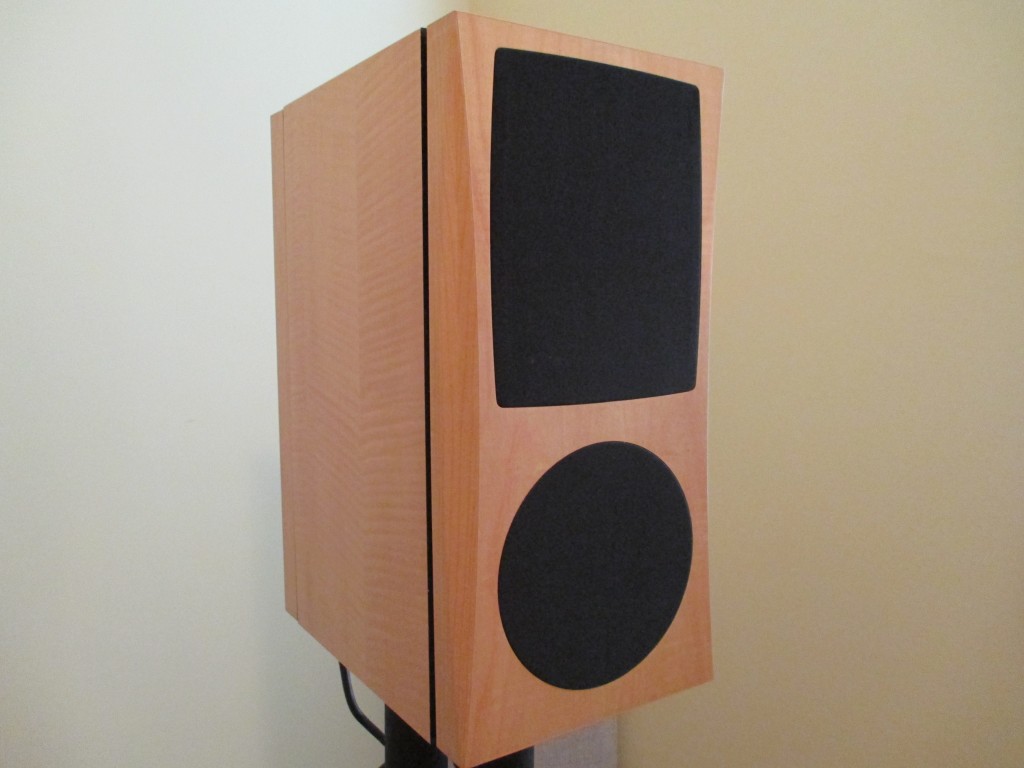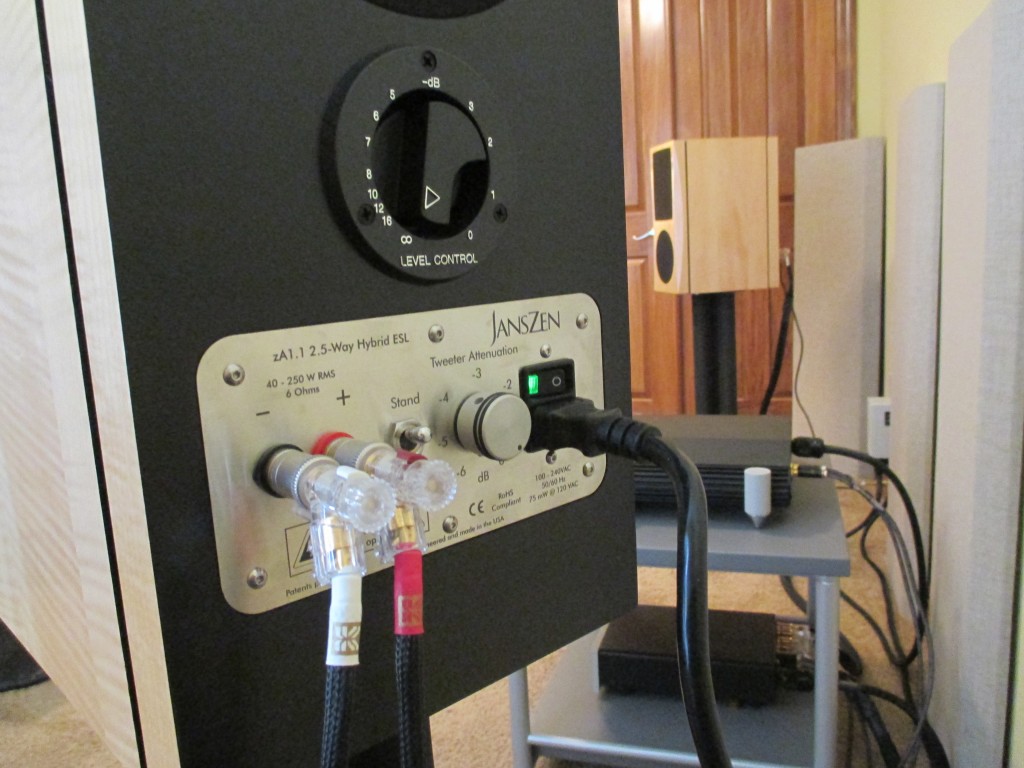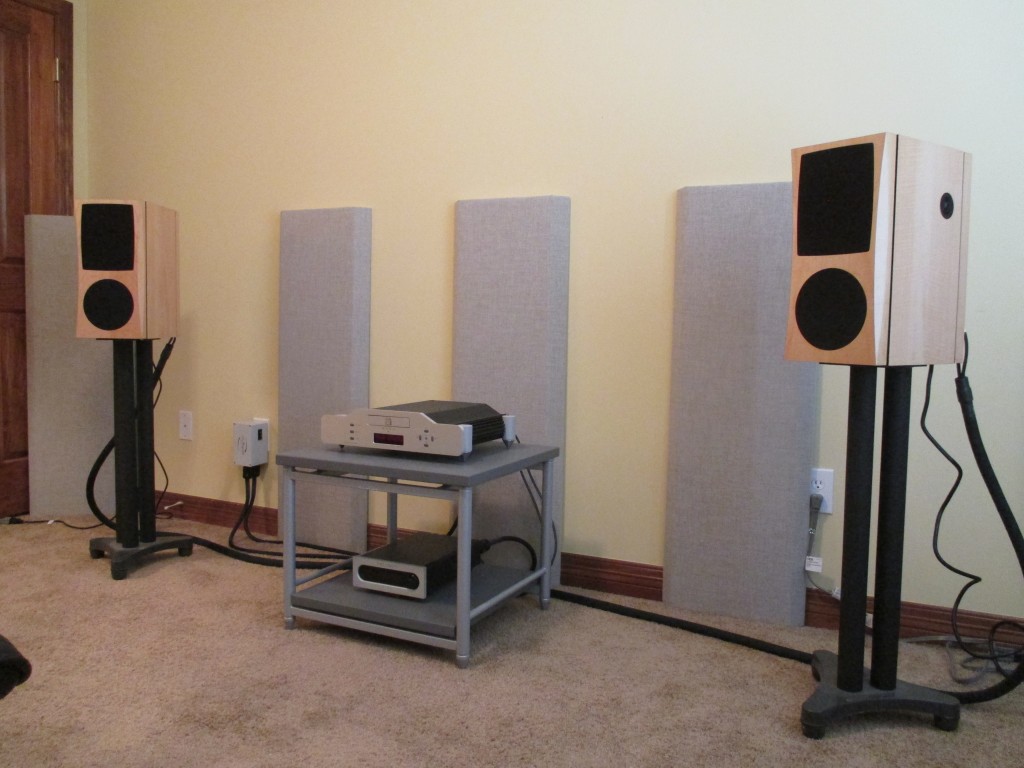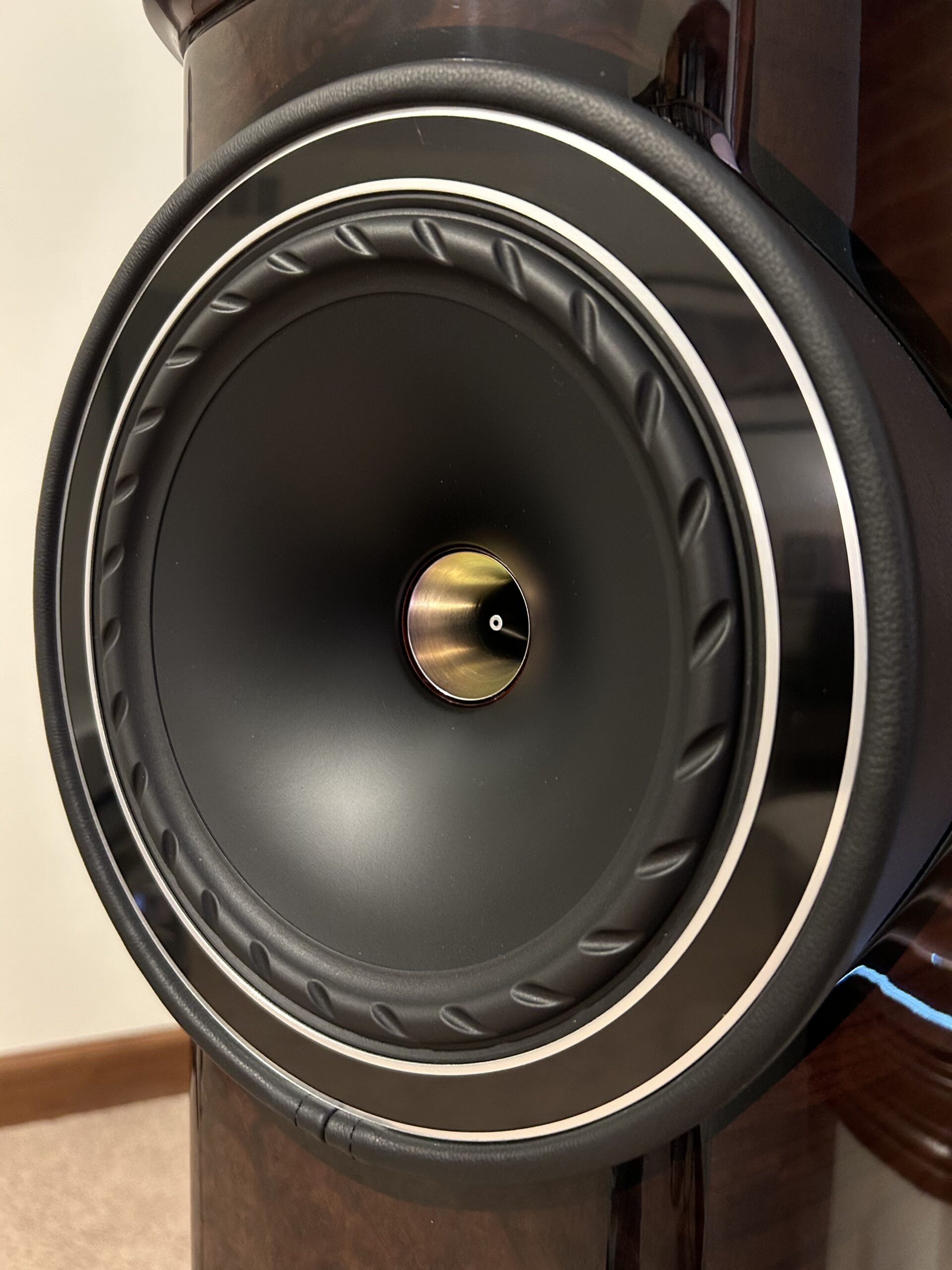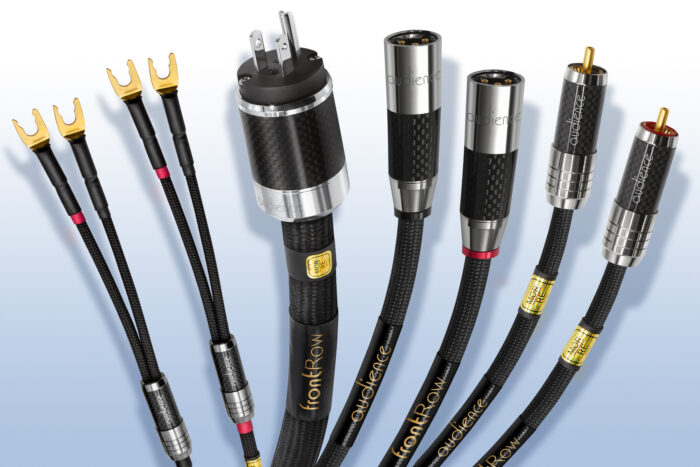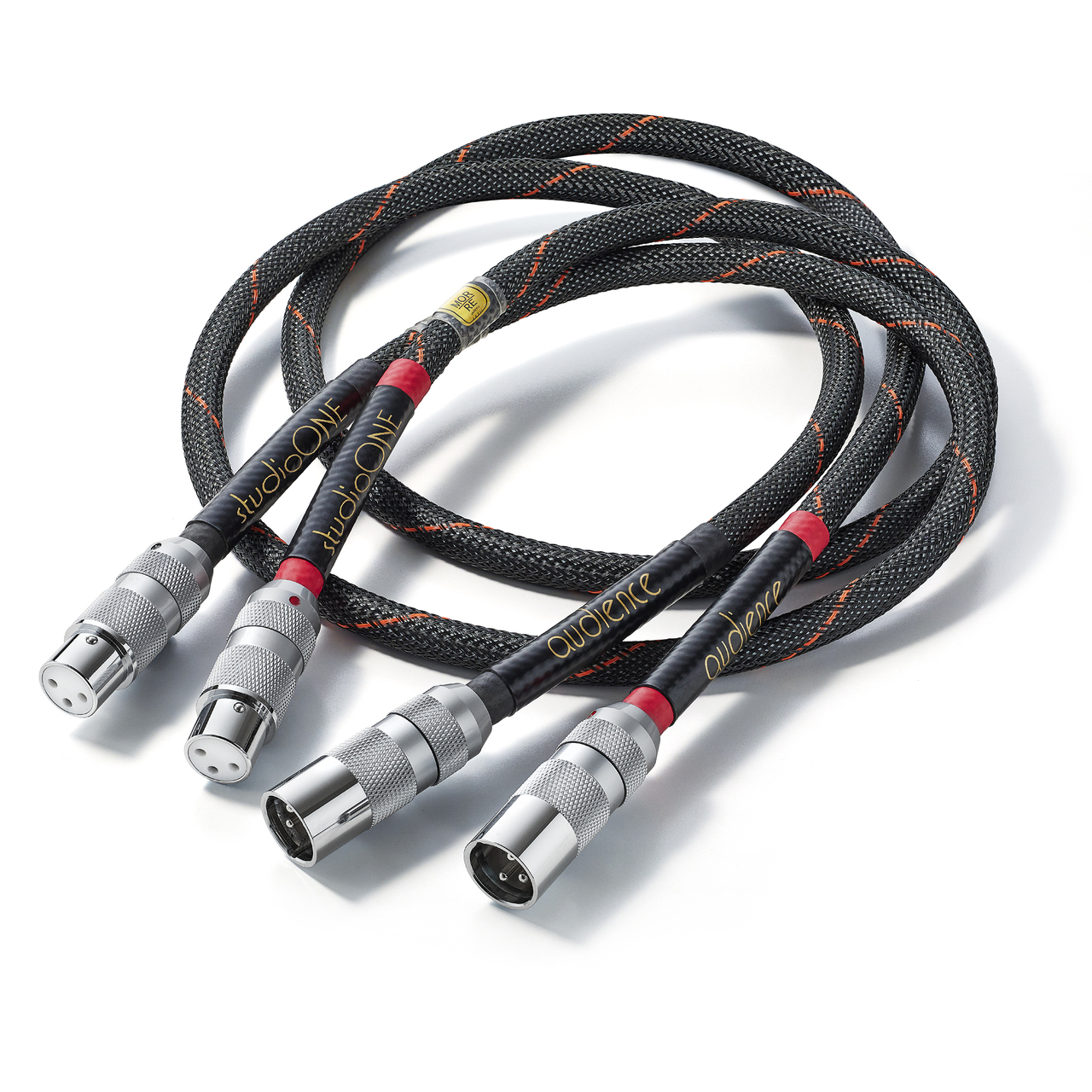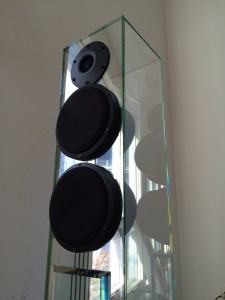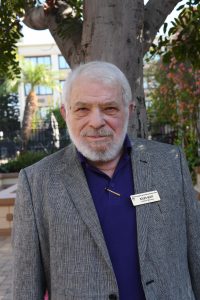Few audio companies can lay claim to as rich and storied a legacy as that possessed by JansZen Loudspeaker Ltd. Arthur A. Janszen is credited with the invention of the first practical electrostatic loudspeaker, and in 1954, was awarded a patent for his design. Over the course of the next three decades, Janszen developed numerous electrostatic loudspeakers under his own name as well as for KLH, Acoustech/Koss and Electrostatic Research Corporation. In 2005, Arthur Janszen's son, David A. Janszen, founded JansZen Loudspeaker Ltd. After decades as an engineer working in fields as diverse as manufacturing, instrumentation and embedded software, the younger Janszen turned his attention to audio, with a commitment to carry on his father's work in electrostatic loudspeaker research and implementation.
The current JansZen loudspeaker product range comprises three models, all of which represent ESL hybrids, whereby electrostatic panels reproduce midrange and treble frequencies, and dynamic woofers handle the bass. The floorstanding zA2.1 loudspeaker mates two electrostatic panels to two dynamic woofers. The zA2.1A takes that basic formula and adds active amplification and digital signal processing (DSP) to facilitate the crossover between drivers and provide a myriad of sound tailoring options. The subject of this review, the zA1.1, takes all the technology and design features of the zA2.1 and reduces it in size and scope to a compact package suitable for stand-mounted or bookshelf placement. The zA1.1 employs the same two woofers utilized in its larger, floorstanding stablemates and couples them with one electrostatic panel.
In order to appreciate David Janszen's design goals for the zA1.1, it is necessary to first understand the principles of electrostatic-loudspeaker (ESL) technology. The majority of loudspeakers on the market today are electrodynamic in design. Cones or domes of various sizes and materials move air back and forth to create sound waves in response to audio currents passing through a thin wire known as a voice coil, which is suspended in a gap between the poles of a powerful magnet. This cone or dome driver, along with the voice coil and supporting magnet, form a mechanical structure with significant mass. In contrast, an ESL uses an extremely thin, nearly-massless membrane suspended in a gap between two grids of stationary electrodes. An electrostatic field is generated between the grids by a charged coating on the membrane. Sound is produced by an ESL when the grids are energized by an audio voltage, causing the membrane to move back and forth in response.
Electrostatic loudspeakers possess numerous advantages in reproducing sound. First, distortion levels are greatly reduced compared to dynamic drivers, and due to the extreme thinness and lightweight nature of the membrane, ESLs are able to respond much more quickly to musical impulses and are largely free of the resonances that can be endemic to dynamic cones. ESLs can often evince remarkable levels of transparency as a result of the nearly massless nature of the membrane.
Nothing comes without trade-offs, of course, and electrostatic loudspeakers are not without their own limitations, which must be circumvented via design and implementation. ESLs are typically dipolar in nature, and the resultant phase cancellation can result in curtailed bass extension, as well as more stringent room-placement requirements. Secondly, the ESL membrane is susceptible to humidity and temperature changes, and can lose tension over time. Electrostatic arcing can occur when the high-voltage stators come into contact with the fragile membrane. Lastly, ELSs can be very directional with respect to their dispersion characteristics, which limits the listening area in which proper imaging and frequency extension is optimally experienced.
With the zA1.1, Janszen's design goal was to capitalize on the myriad advantages inherent to ESL transducers while mitigating or eliminating their drawbacks. Starting with the electrostatic element, the zA1.1 separates itself from other ESLs in several ways. First, the electrostatic panels are enclosed and thus function as monopoles. The absence of rear radiation simplifies placement and allows the zA1.1 to be positioned closer to the rear wall, a boon for users with smaller rooms. Secondly, the membrane in the JansZen loudspeaker is damped, unlike other ESL designs, optimizing transient response by eliminating the primary resonance that remains present when damping is not applied. Additionally, this damping, along with a great degree of stator electrode insulation, permits the transducer to more gracefully handle high voltage levels, even overloads, without compression or damage. The electrostatic panel in the zA1.1 is protected from atmospheric contaminants first via its grille cloth and second by an acoustically-transparent covering that protects the membrane from dust, smoke and other airborne pollutants while sealing in the conductive coating. The stator electrodes can withstand extremely high voltage levels without arcing, and the membrane is designed to not lose tension or conductive coating over time.
For bass frequencies, the zA1.1 employs two acousticsuspension, seven-inch, low-mass alloy-cone woofers. Given the zA1.1's limited front-baffle real estate, JansZen mounts the second woofer on the back panel. The crossover between the ESL panel and the front-mounted dynamic driver occurs at 500Hz via shallow, 1st-order slopes and allows for a number of user-configurable controls for tailoring the loudspeaker's sound to the environment in which it's installed and/or to personal listener preference. The crossover utilizes polypropylene capacitors. Taking advantage of the fact that the voltage level on the membrane dictates the sensitivity of an ESL, JansZen incorporates a continuously-variable knob located on the back panel for allowing the user to reduce the amount of treble by up to 6dB. A toggle switch on the back panel allows the user to adjust bass response for two scenarios—full-range for free-standing positioning away from walls, and with a reduction in amplitude at approximately 50Hz for placement against or near the rear wall, or even on an actual bookshelf. The second, rear-facing woofer is rolled in only at frequencies below 50Hz, to provide deep-bass reinforcement at the point where the front woofer is beginning to roll off. In the treble, a secondary first-order roll-off on half the width of the ESL transducer controls dispersion acoustically, without the need for additional electrical filtering.
The cabinet for each JansZen zA1.1 loudspeaker is constructed of 1" thick walls, and is damped and heavily braced internally. The front and rear baffles are 1.25" thick. Subjectively, the zA1.1 feels like it could withstand an earthquake, bomb blast or other natural (or unnatural) disaster. While overall boxy in shape, the zA1.1 incorporates scoops into the vertical edges of the front baffle to reduce the effects of diffraction. Three standard cabinet finishes are offered—cherry, maple and walnut, all using high-grade, figured veneers, with custom finishes available at a premium.
The back panel of the zA1.1 contains, aside from the rear-facing woofer and bass/treble controls, an IEC inlet for the accompanying power cord needed to energize the ESL panels, a power switch and binding posts for amplifier connection. While JansZen prefers the rhodium-plated Cardas Patented binding posts, standard five-way posts are also available as an alternative.
Given how much technology and functionality is packed into the relatively diminutive cabinet of the zA1.1, additional options are necessarily thin on the ground. Nevertheless, JansZen does offer its airLayer feature to prospective buyers. JansZen deliberately limits the horizontal and vertical dispersion characteristics of the ESL panel to ensure minimal deleterious interaction with the room, and to maximize image focus and preservation of recorded ambience. However, for recordings that possess little intrinsic ambience, JansZen has observed that the zA1.1 can sometimes limit soundstage reproduction to the space between the speakers. For those situations, the airLayer option is available. Customers who elect to have the airLayer componentry installed will notice a small soft-dome tweeter mounted on the outside side panel of each zA1.1. This tweeter is restricted to a frequency range between 2kHz and 6kHz and is meant to widen the soundstage via reflection of treble frequencies off the side walls. It uses polypropylene capacitors and air-core coils in its filter network. The airLayer option also includes the provision of a second knob on the rear panel for its own amplitude adjustment, and is continuously variable from fully off to overly loud.
Specifications for the JansZen zA1.1 loudspeaker include a frequency response of 30Hz—40kHz +/- 3dB on axis, with a sensitivity of 85dB for an input of one watt of pink noise at one meter. Recommended power is 40 watts to 250 watts, with a maximum permissible value of 400 watts. Peak sound pressure levels are said to be 105dB for a pair of zA1.1s playing in a medium-sized room and at a listening distance of 13 feet. The zA1.1 cabinet measures 17" high by 8" wide by 12" deep, and weighs a substantial 35 pounds. Each zA1.1 is manufactured in the USA and carries a five-year warranty. The user manual for the zA1.1 can be found on JansZen's web site and is extremely thorough, covering all aspects of the zA1.1's technical features as well as instructions for proper placement and ongoing care.
During the course of the review period, my system comprised a Simaudio MOON CD5.3 CD player, Bel Canto S300i and Cayin A55T integrated amplifiers, Kimber Kable Hero AG interconnects and Monocle X speaker cables, Audience aR2p-TO power conditioner and powerChord ‘e' power cords, with room treatments by Acoustic Sciences Corporation. All components were placed on a SolidSteel 6.2 Audio Table, and the zA1.1s took up residence on Sanus Granite Foundation speaker stands.
By virtue of my residing in the same metropolitan area as JansZen Loudspeaker Ltd., I was able to pick up a pair of zA1.1s directly from the factory. While there, I was able to listen to the zA1.1s as well as a pair of zA1.2s in active HP mode (extended bass) in JansZen's listening room. David Janszen also gave me a tour of the factory, and I was able to witness firsthand the level of craftsmanship, technical expertise and pride that goes into the design and manufacture of each JansZen loudspeaker. As I was able to bring the zA1.1s home in my car, I can't provide any direct experience with packaging and unpacking, but Janszen assured me that each loudspeaker is meticulously and robustly packed for shipment to countries all over the world. My review samples were finished in maple and included the airLayer option as well as five-way binding posts in lieu of the standard Cardas Patented posts.
Installation of the zA1.1s in my smallish, 13' by 10.5' listening room proved to be easier than I had anticipated. The monopole nature of their ESL panels allowed me to place the JansZens closer to the rear wall, and their restricted dispersion directivity greatly ameliorated reflection effects from the sidewalls. More so than other speakers, however, set-up is crucial in fully realizing the zA1.1's capabilities. Due to its restricted vertical dispersion, it is necessary to position one's ears relatively near the middle of the ESL panel. Likewise, toe-in and its effects are more readily discernible than with speakers that possess broader horizontal dispersion characteristics. After some experimentation, I settled on a long-wall configuration, with the zA1.1s placed 28" into the room, 37" from the sidewalls, approximately 6.5 feet apart and 7 feet from my listening chair, all measurements taken from the center of the ESL panel. I toed the zA1.1s in so that their axes crossed a few feet behind my head. Each of the drivers is covered by a permanently-affixed grille cloth, so I was unable to experiment with any differences associated with removing. I, of course, did have to plug in the power cords to energize the ESL panels in addition to making the normal signal-carrying connections to the amplifier. The treble control and bass switch allow the user to significantly alter the zA1.1's sonic signature. I typically left the bass switch in the stand-mounted position, and I left the ESL tweeter level at its default setting, without any attenuation.
It should be readily apparent by now that the JansZen zA1.1 is a technological tour-de-force and represents good value based solely on its design, construction and parts quality alone. All of which doesn't mean much if the speaker can't make music. Which, happily, it can. The foremost thing that struck me in listening to the zA1.1 was the sheer purity and transparency of the midrange. Poe's vocals on "Beautiful Girl" off of her Hello CD (Atlantic 92605-2) sound as if very little artifice exists down the recording/reproducing chain, and the zA1.1 presented her voice with an astonishing amount of verisimilitude. I could easily discern every inflection and intonation as she sang, and the JansZens captured the emotion conveyed perfectly. Less-than-stellar recordings also benefited from the zA1.1's resolving powers in the midrange. Maddy Prior's vocals on "The Blacksmith" off of Steeleye Span's Please to See the King release (Shanachie 79075) were considerably less opaque than I am accustomed to hearing, and when the entire band harmonized during the accapella interludes, I could clearly delineate Martin Carthy's voice from that of Ashley Hutchings and Prior.
The zA1.1's treble register possessed all the hallmarks of electrostatic purity. There was air in spades and a luminescence that I've experienced with few other transducers. The cymbal work in "Sploosh" from Ozric Tentacles' Strangeitude (I.R.S. 0777 7 13215 2 8)) CD was superbly rendered, evincing sublime clarity and realism. Similarly, the myriad of percussion instruments present in "The Return of the Nairobi Trio" from Shadowfax's Esperanto (Earthbeat! 9 42523-2) release was rendered with a combination of smoothness and utter transparency, with seemingly-endless extension. The Shadowfax track highlighted another of the JansZen speaker's strengths—transient speed. Befitting its electrostatic nature, musical impulses started and stopped on a dime, which allowed me to more easily appreciate the rise time, sustain and decay of transients, resulting in an overall presentation utterly devoid of glare, grit and overhang. Pellucid is the descriptor that comes to mind, as it best sums up the unforced clarity and natural ease with which the zA1.1 reproduced music.
Matching up divergent driver technologies has long been the bane of hybridloudspeaker designers. It's not easy to enable such a design to speak with one voice across the entire frequency spectrum with respect to radiation patterns, transient response and even tonality. The zA1.1 fared remarkably well; I could not detect any lack of coherence, or other spatial, temporal or tonal anomalies as the electrostatic panel crossed over to the dynamic woofer. And I was frankly astonished by the celerity on display by that 7" metal cone; its speed was a perfect match for the lightning-quick electrostatic element.
So what about bass? JansZen publishes a 30Hz extension specification for the zA1.1, and given the size of the enclosure and everything that's packed into it, I was understandably skeptical of that claim. I'm happy to report that my skepticism was unfounded—the little JansZen speaker could play low and do so with authority. Given appropriate source material and sound pressure levels, the zA1.1 could produce room-shaking bass. Listening to "Serengeti - The Rainy Season" from Ron Boots' Area Movement CD (Groove GR-090), the subterranean bass pulses were reproduced with exceptional depth and power. I haven't experienced bass extension and authority like that in my listening room since I owned large floorstanders like the Joseph Audio RM25XL or Focal Electra 1027BE; to experience it once again with the stand-mounted zA1.1 was an unexpected pleasure. And, perhaps owing to its acoustic-suspension design, there was no bloat or undue ripeness to the JansZen's reproduction of bass frequencies.
The zA1.1's soundstage reproduction was more akin to that produced by panel speakers such as Magnepans. Soundstage height, depth and width were well represented and expansive, especially considering the size of the cabinets themselves. Nevertheless, and again similar to larger panels, imaging focus, while good, was not as pinpoint as I've heard from other loudspeakers. Soundstage layering was generally excellent, but images were more diffuse and not microscopically-delineated within the stage.
No speaker is perfect. What shortcomings did the zA1.1 manifest? For starters, the little JansZen seemed to be less sensitive than its 85dB rating would suggest. I had to adjust the volume control significantly beyond my normal levels to attain the sound pressure I'm accustomed to with my music. Having said that, I experienced no issues driving the zA1.1s to loud levels with either the Bel Canto S300i or the Cayin A-55T amplifiers, and the Cayin is specified as producing just 40 watts per channel into 8 ohms. Secondly, due to the zA1.1's intentionally-limited dispersion characteristics, the treble region virtually disappears for listeners standing or, to a lesser extent, positioned to the sides of the speaker. This won't be a deal-breaker for most audiophiles, as we tend to listen from the sweetspot anyway, but casual listeners wandering about the listening room will certainly not realize the full sonic potential of which the JansZen speaker is capable. Users who opt for the airLayer option can mitigate this to some degree by turning up the side tweeters for parties and other non-critical listening. While not a shortcoming in and of itself, the sheer neutrality and transparency of the zA1.1 shines a spotlight on the vagaries associated with recording quality. The Eric Woolfson CD, Eric Woolfson Signs the Alan Parson's Project That Never Was (LREC 0590) represents a perfect example of this. The release, comprising a number of songs recorded mostly at Woolfson's home over the course of two decades, is harried by variable sound quality, and the JansZen does nothing to obfuscate those differences in quality, highlighting both the good and bad with respect to the quality of the recorded performance. Lastly, what about the airLayer option? After considerable experimentation, I chose to make use of the side-firing dome tweeter sparingly, if at all. Turned up to the levels where I could readily discern and appreciate the dome's contributions to soundstaging and spatiality, I noted a signature dome-tweeter coloration that subtly detracted from the purity of the electrostatic panel.
I spent a fair amount of time comparing the JansZen zA1.1 to the Monitor Audio GX50, my current reference. The comparison was not as inequitable as the price differential would suggest. Smaller in size and not designed for as full-range a performance envelope as the larger zA1.1, the GX50 mates a 5.5" ceramic-coated aluminum-magnesium (CCAM) mid-woofer to a CCAM ribbon tweeter. Monitor Audio leverages economies of scale by designing its speakers in Britain and manufacturing in China. In direct comparison, the zA1.1 clearly had greater extension in the bass, as well as greater dynamic headroom and wallop when called for. The GX50 possessed a hint of bloom or warmth in the mid-bass that was only exposed by the sheer neutrality of the zA1.1 in that region. The two speakers were on a par in the critical midrange, with the z1.1 being just a touch more refined and transparent to the source material, the GX50 countering with a smidge more body and fullness to vocals and other mid-centric instrumentation. In the treble region, the GX50's ribbon is fast, sweet and pure; nevertheless, the zA1.1's electrostatic panel was even quicker, with a touch more purity, resulting in better delineation of transients. The zA1.1 possessed a larger, more diffuse and enveloping soundstage, with the GX50 taking the lead in imaging precision.
Electrostatic loudspeakers have long been lauded for their openness, clarity and transparency. On the downside, most electrostatic speakers comprise large dipole panels that exert considerable demands upon owners with respect to placement, and are certainly the furthest thing from unobtrusive. With the zA1.1, David Janszen has accomplished a supreme feat of engineering in distilling the myriad benefits of electrostatic speaker technology down into a compact, attractive, easy-to-place package that just happens to sound like real music. Uncolored and transparent, and possessing extraordinary levels of clarity, the JansZen zA1.1 is a remarkable performer.
JansZen zA1.1 Loudspeaker
Retail: $4995 (airLayer option adds $395)
JansZen Loudspeaker Ltd.




